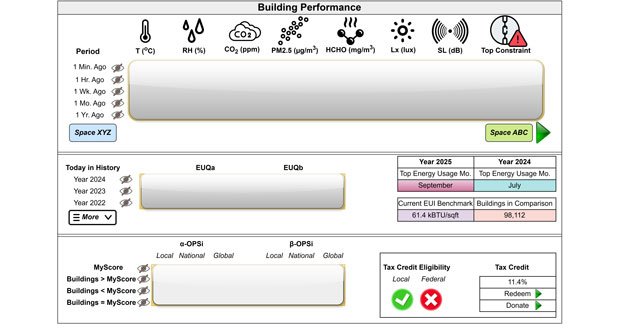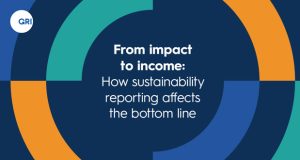As the demand for healthier, more sustainable buildings intensifies, facility managers are increasingly challenged to ensure that indoor environments support occupant wellbeing while also meeting energy efficiency targets. Indoor Environmental Quality (IEQ) has emerged as a crucial factor in achieving this balance, influencing not just comfort, but also productivity, health outcomes, and operational performance. Yet, in practice, the pursuit of high IEQ standards often places additional strain on energy systems, creating a tension between comfort and conservation that requires innovative management strategies.
Maintaining spatial quality that ensures optimal thermal comfort, sound quality, visual comfort, and indoor air quality is key to achieving satisfactory IEQ. As urban populations grow and building energy demands rise, balancing IEQ with energy efficiency has become a critical challenge in sustainable building operation (Al horr et al., 2016). Research underscores that optimising IEQ is not only vital for human wellbeing but also for reducing energy consumption and mitigating environmental impact (Jain et al., 2019).
Over the past decade, advancements in building technologies and increased awareness of health and sustainability have accelerated interest in indoor comfort (Niza et al., 2023). Certification programs like LEED (Leadership in Energy and Environmental Design) by the U.S. Green Building Council (USGBC) and BREEAM (Building Research Establishment Environmental Assessment Method) developed in the UK have been instrumental in encouraging building professionals to prioritise both environmental impact and occupant wellbeing. These frameworks set high expectations for energy performance, air quality, lighting, and thermal conditions during the design and commissioning phases. However, a persistent question remains: do buildings continue to perform sustainably after occupancy begins?
Numerous studies and post-occupancy evaluations have shown a performance gap between predicted design values and real-world operational (Mawed et al., 2020). This performance gap has prompted a global call to action to extend sustainability assessments beyond design certification. From Singapore’s Green Mark to Australia’s NABERS and Germany’s DGNB, emerging certification systems are increasingly incorporating operational data and feedback loops to ensure long-term sustainability (Lee et al., 2019; Nicolini, 2022). Despite these advances, a gap persists in integrating diverse indicators—particularly IEQ and real-time energy use—into a single, unified metric that can guide facility managers in daily decision-making.
In the world of facilities management, the evidence of sustainability is often found in the answer to the question: How best do we measure what happens after the doors open and people move in?
Oluwafemi Awolesi, a doctoral researcher at Louisiana State University (LSU) and recipient of the 2024 IFMA Fellows Scholarship, has developed a new way to answer that question. His tool—the Operational Sustainability Index (OPSi)—offers a multidimensional, evidence-based method to evaluate the true performance of buildings once in use. And the implications for commercial and institutional facilities are significant.
A Case for OPSi
OPSi merges two core pillars of operational performance: Indoor Environmental Quality (IEQ) and Energy Utility Quality (EUQ). IEQ encompasses measurable parameters such as temperature, humidity, air quality, and thermal comfort using indices like Predicted Mean Vote (PMV) and Predicted Percentage Dissatisfied (PPD). Meanwhile, EUQ assesses how energy is used across seasons and compares actual energy use to set benchmarks. OPSi brings these elements together to quantify how sustainable a facility truly is during operation—not just on paper.
“Facility managers have long needed a simple yet rigorous tool to track how well their buildings perform across multiple dimensions,” says Mr. Awolesi. “The OPSi bridges that gap by combining energy metrics with comfort indices into a single score that can inform upgrades, maintenance plans, and even policy decisions.”
Mr. Awolesi’s research demonstrates OPSi’s application across several case studies, including dormitory buildings, event centers, and multifamily housing units in the Southern U.S. In each case, buildings that had achieved LEED certification outperformed non-certified counterparts across nearly all OPSi dimensions. Interestingly, the tool also revealed opportunities for further improvement even in high-performing buildings, particularly in balancing thermal comfort and energy savings—an important insight for facility managers aiming to optimise both comfort and efficiency.
In another case study, a particularly illuminating finding was the identification of energy use during building shutdowns. For example, in one post-COVID scenario, a certified library building continued to consume energy despite zero occupancy. This anomaly helped establish what Mr. Awolesi calls the “idle energy benchmark”—a minimum expected energy use when a building is unoccupied, typically due to essential systems or phantom loads. Identifying and addressing such inefficiencies is just one way OPSi can support smarter operations.
The OPSi is designed not only as an assessment tool but also as a planning instrument. For example, facility managers in educational, healthcare, or commercial buildings can use OPSi scores to justify budgetary requests for HVAC upgrades, LED retrofits, or smart thermostats. Over time, aggregated OPSi scores can also enable benchmarking across campuses or property portfolios, promoting a performance-based culture.
What sets OPSi apart is its accessibility and flexibility. Unlike proprietary energy models, the index can be calculated using commonly available building data and portable sensors. It also allows decision-makers to choose among more stringent or relaxed scoring models based on their goals—whether focused on compliance, cost savings, or occupant satisfaction.
As Mr. Awolesi prepares to share key findings from his ongoing research at the 2025 IEQ Conference in Montreal, Quebec, Canada, this fall, his work is poised to spark broader conversations within the global facility management (FM) community. With growing awareness , the FM industry may begin to recognise OPSi not only as a tool for evaluating LEED-certified buildings, but also as a transformative model for assessing and improving sustainability across the entire built environment—regardless of certification status, building type, or region.
The OPSi Dashboard (Source: (Awolesi & Reams, 2025))
A Conversation with Oluwafemi Awolesi
In a recent interview aimed at learning more about his inspiration, the value of OPSi in commercial settings, and what’s next for his research, Mr. Awolesi had some things to say—offering candid reflections on the evolution of his work, its real-world impact, and how facility managers can begin applying OPSi principles today.
Moderator: What led you to develop OPSi?
Oluwafemi: I saw a major gap between the promise of green certifications and what buildings were actually delivering years later. A building might be “green” on paper, but still have poor indoor air quality or high winter heating loads. I wanted to develop a metric that reflects operational reality, not just design intent. I also wanted to do something that could help enhance green building adoption in an affordable way.
Moderator: What surprised you most in your case studies?
Oluwafemi: Honestly, how much energy is wasted during non-occupancy periods. In April 2020, most libraries were closed, yet their EUI ranged from 0.82 to 3.05 kWh/sqft. That’s idle waste. When this is integrated into OPSi, it helps set shutdown energy benchmarks so FMs can now ask: “Why isn’t our building closer to that lower bound during closures?”
Moderator: How can facility managers apply this tool now?
Oluwafemi: Start small—benchmark against your own best-performing buildings. Use the first dimension of the EUQ metric to compare seasonal loads. Survey staff about comfort and connect that with HVAC data. OPSi gives you quantifiable, transparent performance insights that go beyond gut feel or manufacturer claims.
What’s Next?
Mr. Awolesi, a member of the International Society of Energy and Built Environment and a two-time recipient of the International Air & Waste Management Association’s Sustainability Research Scholarship, was recently inducted into the Phi Kappa Phi Honor Society. He remains committed to advancing sustainability in the natural and built environments through actionable research and data-driven optimization.
His hope? That OPSi becomes a universal benchmarking language for post-occupancy building performance, used by facility managers, city governments, and green building consultants alike.
“If we can track comfort, energy, and emissions in one system, we can stop guessing—and start managing smarter.”
References
Al horr, Y., Arif, M., Katafygiotou, M., Mazroei, A., Kaushik, A., & Elsarrag, E. (2016). Impact of indoor environmental quality on occupant well-being and comfort: A review of the literature. International Journal of Sustainable Built Environment, 5(1), 1-11. https://doi.org/10.1016/j.ijsbe.2016.03.006
Awolesi, O., & Reams, M. (2025). Development and Demonstration of the Operational Sustainability Index (OPSi): A Multidimensional Metric for Building Performance Evaluation. Preprints.https://doi.org/10.20944/preprints202505.1407.v1
Jain, N., Burman, E., Robertson, C., Stamp, S., Shrubsole, C., Aletta, F., Barrett, E., Oberman, T., Kang, J., Raynham, P., Mumovic, D., & Davies, M. (2019). Building performance evaluation: Balancing energy and indoor environmental quality in a UK school building. Building Services Engineering Research and Technology, 41(3), 343-360. https://doi.org/10.1177/0143624419897397
Lee, J. Y., Wargocki, P., Chan, Y. H., Chen, L., & Tham, K. W. (2019). Indoor environmental quality, occupant satisfaction, and acute building‐related health symptoms in Green Mark‐certified compared with non‐certified office buildings. Indoor Air, 29(1), 112-129.
Mawed, M., Tilani, V., & Hamani, K. (2020). The role of facilities management in green retrofit of existing buildings in the United Arab Emirates. Journal of Facilities Management, 18(1), 36-52. https://doi.org/10.1108/jfm-07-2019-0035
Nicolini, E. (2022). Built Environment and Wellbeing—Standards, Multi-Criteria Evaluation Methods, Certifications. Sustainability, 14(8). https://doi.org/10.3390/su14084754
Niza, I. L., Bueno, A. M., & Broday, E. E. (2023). Indoor Environmental Quality (IEQ) and Sustainable Development Goals (SDGs): Technological Advances, Impacts and Challenges in the Management of Healthy and Sustainable Environments. Urban Science, 7(3). https://doi.org/10.3390/urbansci7030096
-ends-
The view or information contained within these unedited press releases, are that of the company producing it and not necessary the views of kpm.





